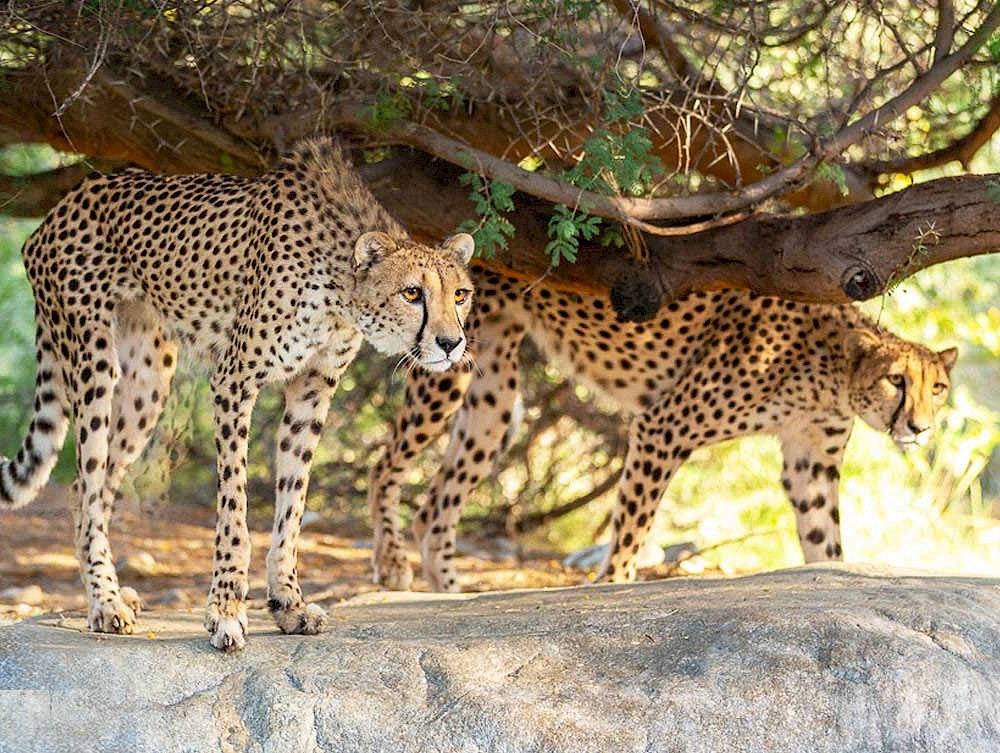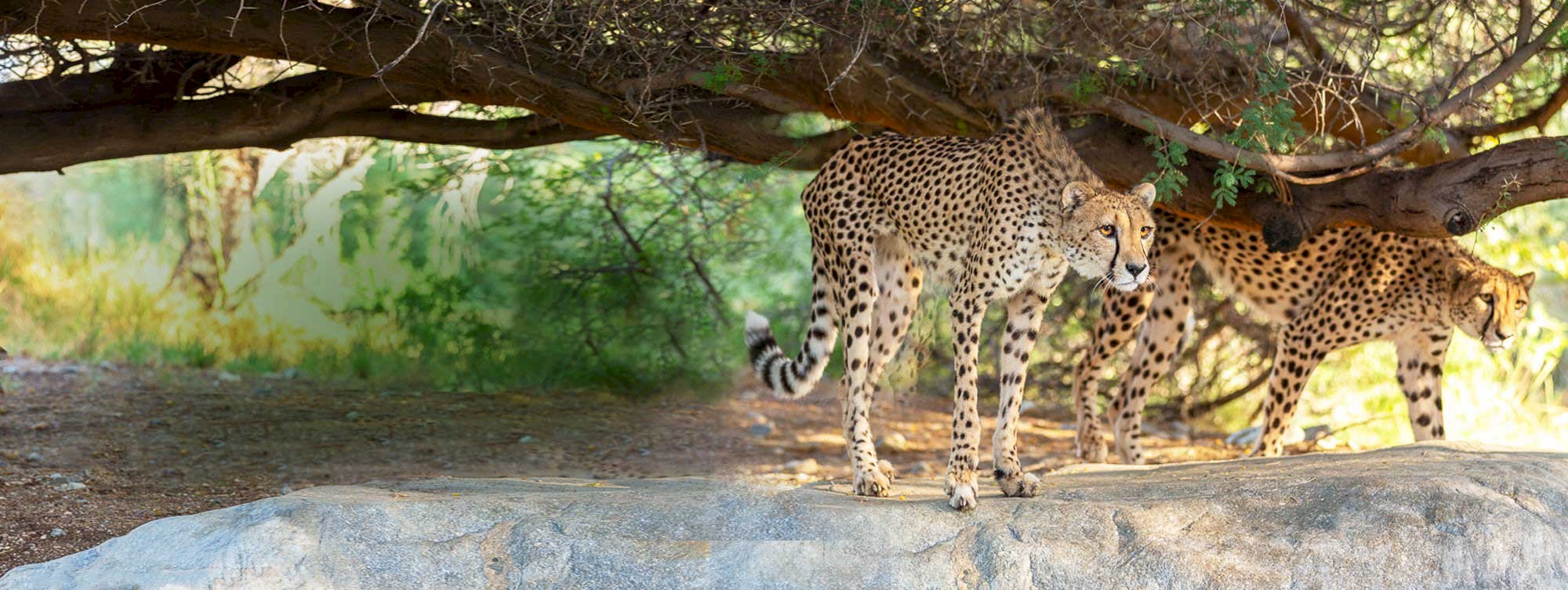Rhinos are coming
May 3, 2021
This Wednesday we celebrate Cinco de Rhino with others around the world in sharing about these amazing creatures and supporting rhino conservation. This is especially important to us at The Living Desert Zoo and Gardens as we prepare the Rhino Savanna and ready it to welcome our own crash of rhinos this fall! Their home will be the first thing you see as you enter the zoo.
We are going to extremes to modelling our rhino habitat to match the natural habitats in which these black rhinos live in Africa. Rhino typically live in a savanna habitat, with large expanses of open area without much vegetation and then dense thorny underbrush in which they can hide their young ones from predators. These underbrush are over arched by huge umbrella shaped Acacia trees.
Savannas also tend to have intermittent rainy periods of the year followed by extended very dry stretches. As such, many muddy holes persist throughout the year, and become increasingly important in the hot dry periods of the year. Although you would not think it, rhino enjoy a good wallow in the mud as much as anybody!
The habitat that we are constructing for our rhino here will have all these features! We Will have large trees on which to scratch their itches, muddy wallows to cool themselves off in the summer, and beautiful broad canopy trees under which the rhinos can rest. Thankfully, due to the high-quality care and safety they will enjoy here with us, they do not have to hide their young ones from predators in thorny bushes!
When you visit our habitat, and meet our new friends, you will have many opportunities to learn about the many conservation projects that The Living Desert does to support rhino. This includes our well known and deep partnership with the Black Mambas Anti-Poaching Unit, to the work that we do in Tanzania with Wild Nature Institute to instill in the young people of this wonderful country a desire to conserve Africa's giants, and finally to our support for other organizations that benefit rhino by protecting nature in six Eastern African countries.
The Living Desert is fervently committed to the care and the conservation of these beautiful animals in their home countries and here on our grounds. We hope once you come and visit our black rhino, you will become impassioned advocates for their conservation in the same way as we all are!
You’re invited to help make them feel right at home!
We invite you to join in the fun to help make our African black rhino pair feel right at home. The Coachella Valley’s NEWEST Movers & Shakers will be arriving at The Living Desert Zoo and Gardens this fall. Their new multi-species habitat, set on almost four acres, is nearing completion and in need of those final touches to make it feel like home.
“What could I possibly get a rhino?” you ask.
Visit the Rhino Registry for all your rhino-sized gift options!
In lieu of our annual gala, we invite you to help furnish their habitat with a housewarming gift! Shop the exclusive Rhino Registry to find that perfect gift.
Would you like to talk to a registry consultant. Contact us today!
RhinoRegistry@LivingDesert.org or (760) 340-1037
Did You Know
- Male rhino are called bulls, females are called cows and their babies are called calves. More than one rhino together are called a “crash”.
- Rhino have poor eyesight and depend more on their sense of smell and communicate through sound. They may snort, sneeze, scream and “mmwonk”.
- Poaching, loss and fragmentation of habitat, and human population and infrastructure growth are all threats to rhino.









